SAE Baja India Project
Chassis Design & CAE Lead • Marketing Lead
My Role & Responsibilities
As Chassis & CAE Head and Marketing Lead, I bridged technical excellence with strategic business development, ensuring both engineering integrity and financial sustainability for the team RCOE RETRO.
Key Contributions
I designed the complete chassis structure ensuring SAE rulebook compliance while optimizing for two drivers with different anthropometric requirements. My work involved conducting comprehensive FEA on chassis and full ATV assembly, analyzing stress distribution, safety factors, and performance under various loading conditions.
Beyond technical work, I secured multiple corporate sponsorships through strategic presentations and relationship management, funding critical project components. I coordinated cross-functional team activities between design, manufacturing, and testing phases, while optimizing chassis weight by 15% through iterative design and analysis without compromising structural integrity.
Workflow
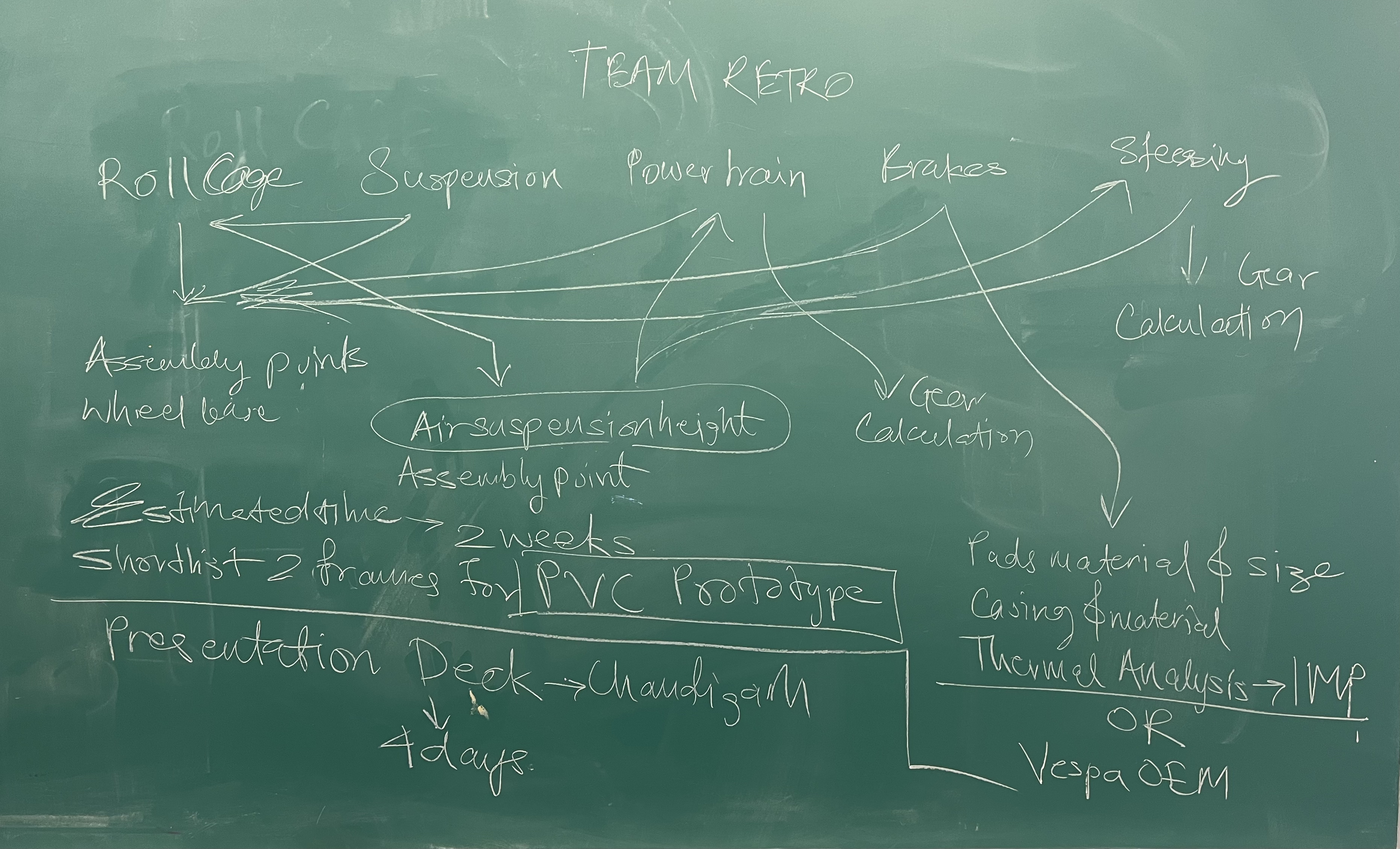
Requirements Analysis & Planning
The project began with comprehensive analysis of SAE Baja India rulebook requirements, driver anthropometric data, and performance objectives. This phase established design constraints, safety requirements, and project timeline for the chassis development process.

Framework Development
The design process began with understanding the anthropometric needs of two different drivers. Initial conceptual designs were developed to explore different chassis configurations. Multiple design alternatives were evaluated considering factors like manufacturability, weight distribution, and integration with other vehicle systems.
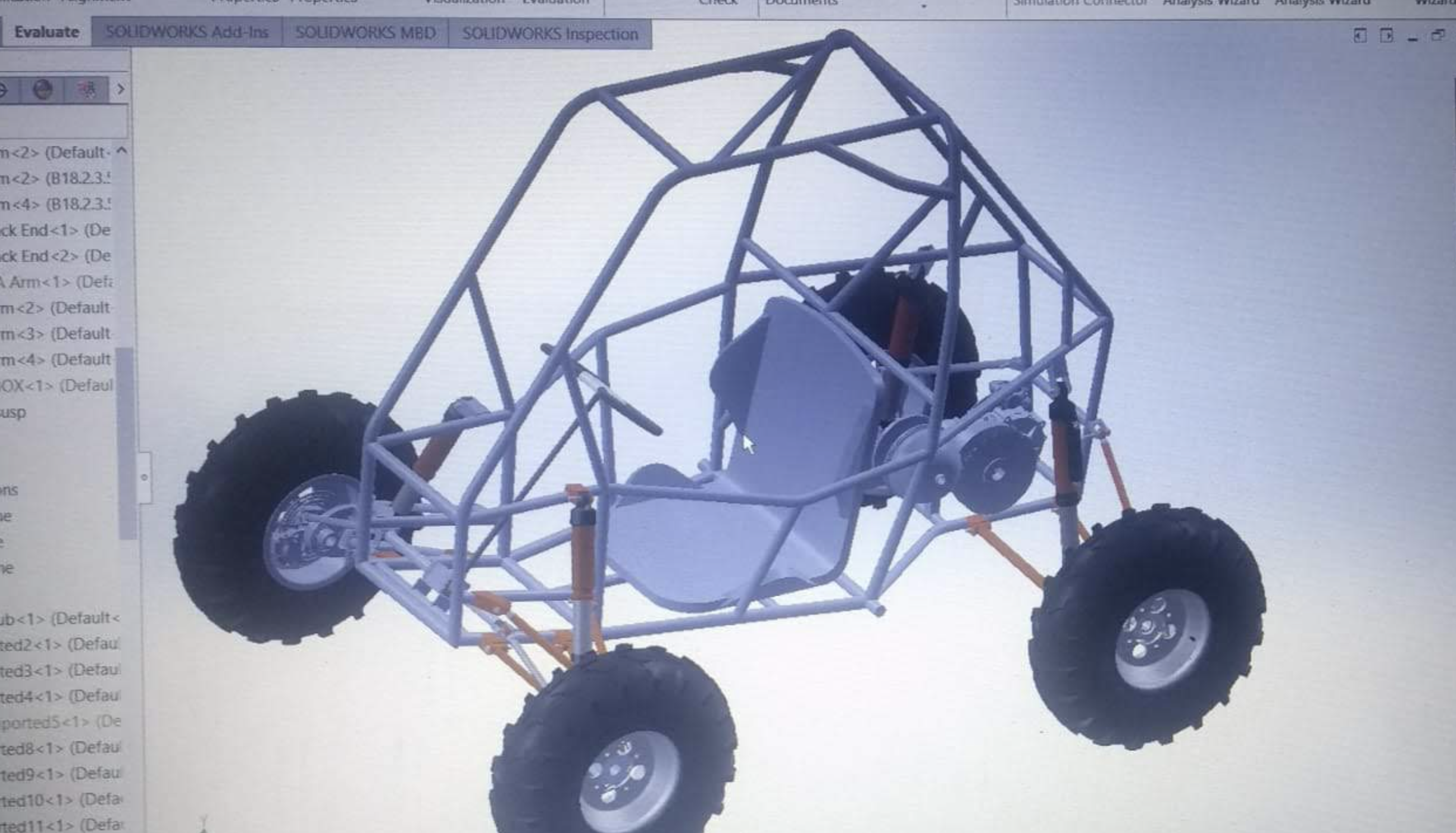
Ergonomic & CAD Design (SolidWorks)
Using SolidWorks, I created a space frame chassis optimized for ergonomics, safety, and packaging. The model strictly adhered to the SAE Baja India rulebook — especially roll cage, impact zones, and material constraints. The ATV was assembled in Solidworks.
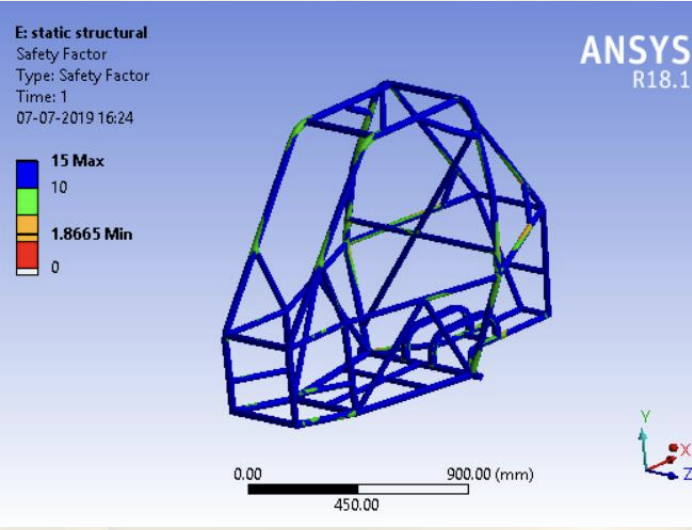
Finite Element Analysis (ANSYS & MATLAB)
After finalizing the CAD, I conducted FEA using ANSYS and MATLAB. Multiple load cases — including frontal and side impact, torsional rigidity, and operational loads — were simulated. I iteratively optimized tube diameters and joint placements, ultimately reducing chassis weight by 15% while maintaining safety margins.
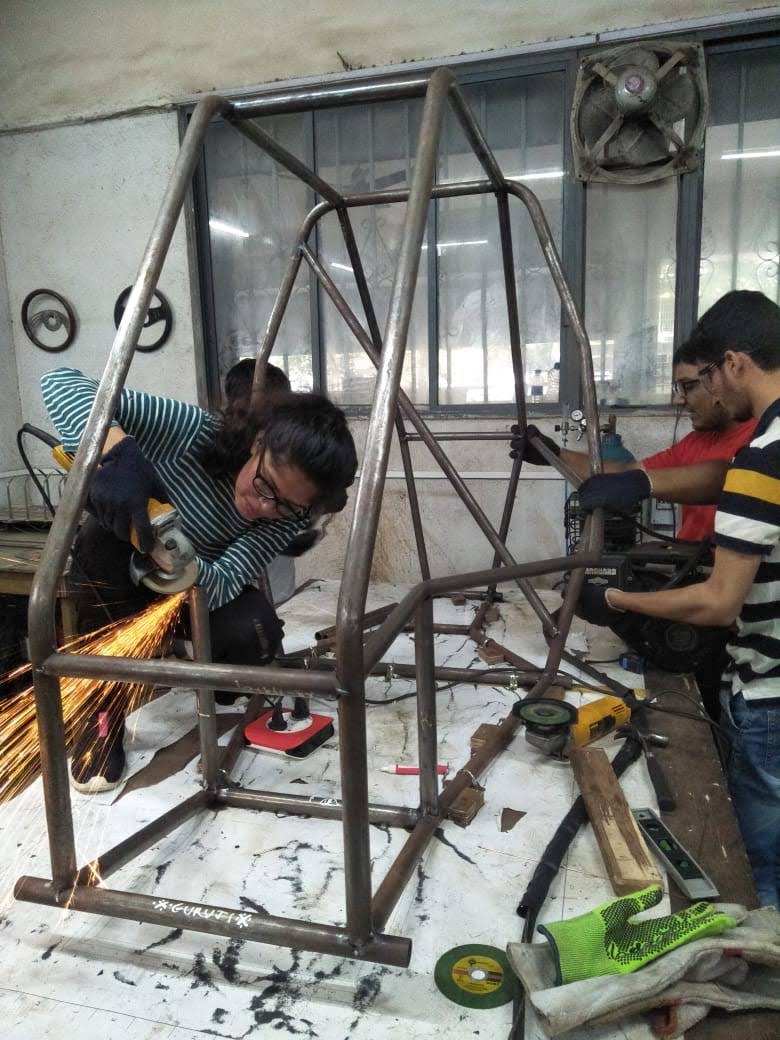
Fabrication & Assembly
The optimized design was manufactured using precision welding techniques and quality control processes. Close collaboration with the fabrication team ensured all design specifications were met while maintaining structural integrity throughout the assembly process.
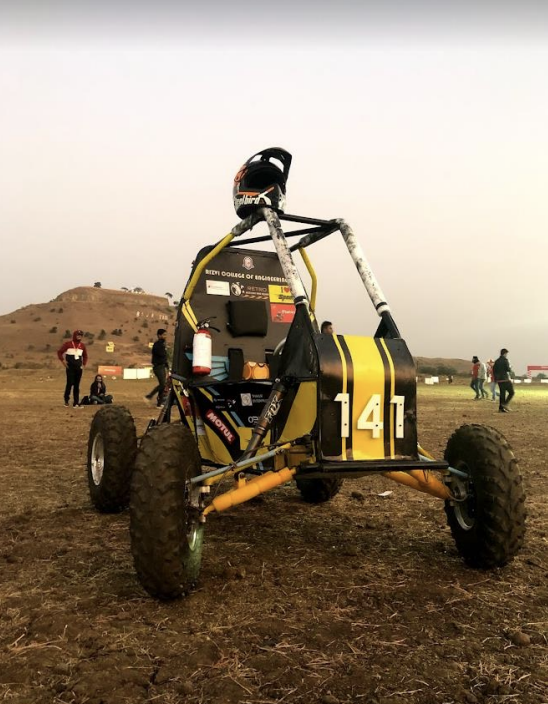
Performance Validation & Competition
The ATV underwent rigorous testing including static load tests, dynamic performance evaluation, and safety inspections. The successful validation enabled the team to achieve top-20 national rankings.
Outcomes & Professional Impact
This project significantly shaped my professional trajectory, demonstrating the value of combining technical expertise with business acumen in complex engineering projects. This comprehensive experience was instrumental in securing national placement opportunities, being selected from 2000+ students.